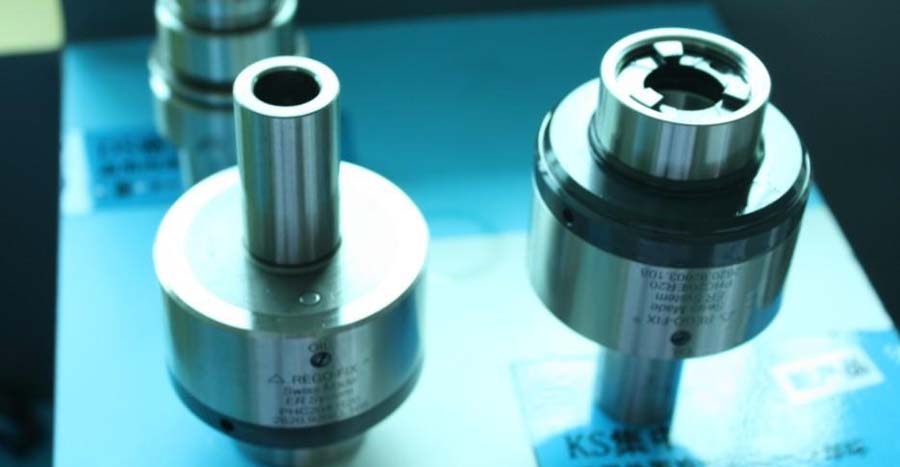In the relentless pursuit of tighter tolerances, superior surface finishes, and the efficient machining of ever-more-complex materials, the world of precision manufacturing is in a constant state of evolution. At the very heart of this progress lies the cutting tool itself. No longer a simple consumable, modern tooling has transformed into a highly engineered, data-driven component that is central to the success of any advanced machining operation.
Several key trends and innovations are defining the future of tooling, pushing the boundaries of what is possible in terms of speed, accuracy, and intelligence on the shop floor.
Faster and higher precision requirements
Maximizing the reduction of CNC machining costs requires higher material removal rates and longer tool life. In order to reduce processing time, modern spindle speeds are faster and machine feed rates are higher. In addition, modern machine tools adopt more robust structures to withstand larger loads.
At the same time, the product design team hopes to achieve closer collaboration, reduce differences between parts, and thus achieve better and more consistent operations. They also hope that the parts will be made of harder and tougher materials that have a longer lifespan but may be more challenging to process. Therefore, the tolerance requirements for many metal components are becoming increasingly strict, and surface smoothness is also receiving more attention.
Challenges at the Tool Tip
The faster the cutting speed, the more heat is generated. The greater the frictional force on the surface of the cutting tool, the more likely it is to produce chips and corrosion, and the higher the wear rate. The higher the chip generation rate, the greater the challenges faced by chip breakage and chip management.
Other issues include thermal expansion and deflection caused by increased cutting force, which often reduce accuracy and deteriorate surface smoothness.
1. Advanced Materials and Complex Geometries
The foundation of any great tool is its material. While tungsten carbide remains the bedrock, the innovation lies in creating new, highly specialized grades and leveraging alternative materials to conquer specific challenges.
Micro-grain and Nanocomposite Carbides: Metallurgists are developing carbide substrates with ultra-fine grain structures. These micro-grain and nano-grade carbides offer a superior combination of hardness and toughness, providing exceptional edge retention for finishing exotic alloys and resisting the micro-chipping that can plague high-speed operations.
Advanced Ceramics: For machining hardened steels and superalloys like Inconel, advanced ceramics (such as silicon nitride and SiAlONs) are enabling significant increases in cutting speeds. These materials retain their hardness at extreme temperatures where even carbide would fail, allowing for “hard turning” and “hard milling” to become viable alternatives to slower grinding processes.
Optimized Geometries: With the power of advanced simulation software (FEA), tool manufacturers are designing complex flute geometries, variable-helix, and variable-pitch end mills that are inherently stable. These designs disrupt the harmonic vibrations that cause chatter, allowing for deeper cuts, faster feeds, and a dramatically improved surface finish, even in long-reach applications.
2. The Revolution of Smart Coatings
Modern tool coatings are far more than a simple protective layer; they are sophisticated, multi-layered nanocomposite structures engineered for specific applications. The trend is moving away from general-purpose coatings to highly tailored solutions.
High-Entropy Alloy (HEA) Coatings: A breakthrough in material science, HEA coatings are composed of multiple principal elements. This creates a highly stable, dense structure that offers a unique combination of high hardness, excellent thermal stability, and superior wear resistance, making them ideal for the extreme conditions of machining titanium and other aerospace alloys.
Adaptive and “Chameleon” Coatings: The next frontier is the development of adaptive coatings. These materials can subtly change their properties at the tool-chip interface in response to cutting temperatures. For example, a coating might exhibit low friction at moderate temperatures but form a hard, protective oxide layer at very high temperatures, effectively adapting to the changing conditions of the cut.
Diamond Coatings for a Digital World: With the rise of carbon fiber reinforced polymers (CFRP) in aerospace and automotive, tooling with CVD (Chemical Vapor Deposition) diamond coatings is essential. Innovations are focused on improving the adhesion of these ultra-hard coatings to carbide substrates, drastically extending tool life when machining these highly abrasive composite materials.

3. Tooling in the Age of Industry 4.0: Smart and Connected
The biggest shift in tooling is its integration into the digital manufacturing ecosystem. “Smart tools” are closing the loop between the physical cut and the digital control system.
Sensor-Embedded Tooling: Tool holders and, in some cases, the tools themselves are being embedded with micro-sensors to provide real-time data on critical parameters like temperature, vibration, and cutting forces. This data can be streamed directly to the CNC controller or a monitoring system.
Predictive Analytics and AI: By feeding this real-time data into an AI-powered analytics platform, manufacturers can move from reactive to predictive maintenance. The system can predict with high accuracy when a tool is about to fail, allowing for a planned change before it breaks or compromises part quality. It can also auto-adjust feeds and speeds “on the fly” to mitigate chatter or avoid overloading the tool.
Digital Twinning: Every smart tool can have a “digital twin”—a virtual model that lives in the system. This twin tracks the tool’s entire lifecycle, from its initial setup and precise measurements to its accumulated wear and performance history, ensuring that process planners are always working with accurate, real-world data.
4. Additive Manufacturing: Printing the Perfect Tool
Additive manufacturing, or 3D printing, is revolutionizing tool design and fabrication, enabling features that are impossible to create with traditional methods.
Conformal Cooling Channels: For solid carbide or steel tool bodies, 3D printing allows for the creation of intricate, conformally shaped cooling channels that run just beneath the cutting edge. This enables the delivery of high-pressure coolant to the exact point of heat generation, dramatically improving chip evacuation, extending tool life, and enabling faster cutting speeds, especially in deep-hole drilling and when machining heat-resistant alloys.
Customized Tooling on Demand: Additive manufacturing makes it economically viable to produce highly specialized, one-off tools for unique applications. A complex profile tool that would have required weeks of custom grinding can now be designed and printed in a matter of days, accelerating development cycles for new components.
Conclusion
Tooling is no longer an isolated, passive element in the machining process. It is becoming an active, intelligent, and highly engineered strategic asset. The convergence of advanced materials, intelligent coatings, embedded sensors, and additive manufacturing is creating a new generation of tooling that is not only sharper and harder but also smarter. For precision manufacturers, harnessing these innovations is no longer an option—it is the key to staying competitive in an increasingly demanding and data-driven industry.



